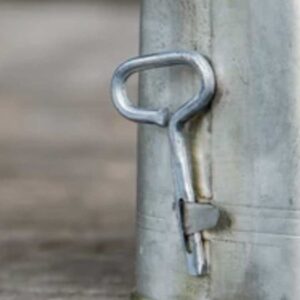You might have noticed a small black spot forming in the corner of a wall. Initially, it could look like nothing more than a smudge or a speck of dirt. But over time, it spreads, darkens, and might even start giving off a musty odor.
What seems minor could be a signal of a deeper problem behind the walls. While it’s not a reason to panic, it’s certainly something you shouldn’t ignore. With the right steps, you can stop the damage from getting worse and restore your home to a healthier state.
What Causes These Black Spots? (Spoiler: It’s More Than Just Dirt)
Black stains on walls—especially in corners—aren’t usually about poor cleaning habits. The real culprit is often excess moisture.
In rooms with poor air circulation, such as bathrooms filled with steam, closed-up kitchens, or bedrooms that rarely get aired out, moisture in the air lingers. When it meets cold wall surfaces, it condenses—and that’s when mold begins to thrive.
Other common causes include external leaks, such as water from a broken gutter, a leaking roof, or rising moisture from the foundations. Additionally, poor insulation can create thermal bridges—cold areas where moisture gathers more easily.
Another thing people often overlook is furniture placement. When wardrobes or sofas sit directly against walls without any gap, air can’t circulate properly, allowing mold to grow silently behind them.
What To Do Right Away
If you see a dark patch forming, it’s best to act fast. The quicker you respond, the less likely the problem will spread.

Start by airing out the room thoroughly in the morning and evening—even during winter. Just ten minutes of fresh air can drastically reduce humidity levels.
Then move on to cleaning the mold. A mix of white vinegar and warm water can work well for surface stains. For more persistent spots, hydrogen peroxide can be effective. However, be cautious: don’t use vinegar on natural stone or marble, as it can cause damage.
Make sure to move furniture a few inches away from the walls to allow air circulation. This small change can make a big difference.
If the room still feels damp, consider using a moisture absorber or a small electric dehumidifier, especially in areas like laundry rooms or bathrooms.
Preventing Mold from Returning
Once you’ve cleaned the affected areas, the key is to stop it from happening again.
Make sure your home is properly ventilated. If necessary, install or improve ventilation systems like extractor fans in kitchens or bathrooms.
Keep track of humidity levels with a hygrometer—an inexpensive tool that helps you ensure your indoor air stays between 40% and 60% humidity.
Consider using anti-moisture paint on walls that are prone to dampness. While it’s not a complete fix, it adds a layer of protection.
If you suspect deeper issues like leaks or insulation problems, it’s wise to contact a professional. Sometimes what you see on the surface is just a symptom of a larger hidden issue.
What If the Stains Keep Coming Back?
If mold reappears despite your efforts, it’s time to dig deeper.

Inspect your roof, gutters, and walls. The root of the issue could be hidden leaks or faulty insulation. There are also specialized treatments for rising damp, including resin injections and anti-saltpeter solutions for walls showing white or crumbling spots.
Hiring a certified moisture expert can save you from bigger repairs later. If you’re renting, be sure to notify your landlord—mold can be a serious health concern and should be addressed quickly.
Conclusion
Black spots on your wall may seem small, but they can be signs of a larger moisture issue. By staying alert and taking quick action, you can control the situation and create a cleaner, healthier living space. A bit of awareness and maintenance can go a long way in keeping your home mold-free.
If You Spot These Mysterious Black Dots In Your Kitchen, Here’s What To Do

It’s never all that fun to notice things in our homes that don’t seem to have an obvious explanation. For this mom, this is when she discovered a set of black droppings scattered throughout her home
The turned to Facebook seeking guidance as she expressed her confusion over discovering this. Posting on a Mrs. Hinch fan page, she shared a series of images revealing peculiar black specks along her skirting board and wall.
“Anyone have any idea what this is?” She asked. “Just appeared this last week or so on the skirting board in my dining room, also bits on the wallpaper and the floor which gets mopped every day! It’s not bumpy, it looks like some sort of paint splatter but it isn’t.” She continued.

Followers came back with a common answer – Spider Poo

Fellow enthusiasts of Mrs. Hinch promptly came to the rescue, with users confidently asserting that the markings were indeed spider droppings. One wrote: “It happens a lot this time of year, spiders pooing everywhere, Dettox spray is good for it.” While another said: “It’s spider poo after they’ve eaten flies. I get it on my window sill.” Others said it could have been “fly poo” while one user was adamant, it was “spider poo for defs”.
What do the experts say?
According to various sources offering advice on pests, spiders typically do not leave solid droppings; instead, their excrement is thick and liquid in consistency, resembling dark ink stains. These markings often appear on walls and surfaces.
Spider feces are not solid; instead, they appear as dark stains or drips on walls and surfaces. The specific appearance of the droppings varies among spider species, making it challenging for the untrained eye to distinguish.
Typically, spider poop accumulates in a specific location below their web, often in corners with cobwebs on walls. Since spiders seek dark or undisturbed places for refuge, their droppings may unexpectedly appear in various locations. The size of spider droppings is approximately that of a pinhead, and they exhibit a monotone color, with variations in white, black, gray, or brown hues.
Is spider poo dangerous to handle?
While spider poop is not proven to transmit pathogens, it is advisable to treat it with caution and handle it as if it were potentially toxic. Studies indicate that pathogens ingested by spiders do not typically pass on through their droppings.
Nevertheless, it’s important to exercise caution and thoroughly wash hands with soap and water after handling spider feces. Cleaning fresh spider droppings is easier, while dried ones may require more effort to remove and may leave behind yellow stains.
It’s essential to note that cleaning up spider poop does not eliminate the spiders responsible for it. To prevent the reappearance of droppings, taking action against these creatures is necessary. Maintaining a highly tidy environment and removing every spider web you encounter is a good starting point. There are also products available to assist with infestations, and professional pest control services are well-equipped to handle such situations.





